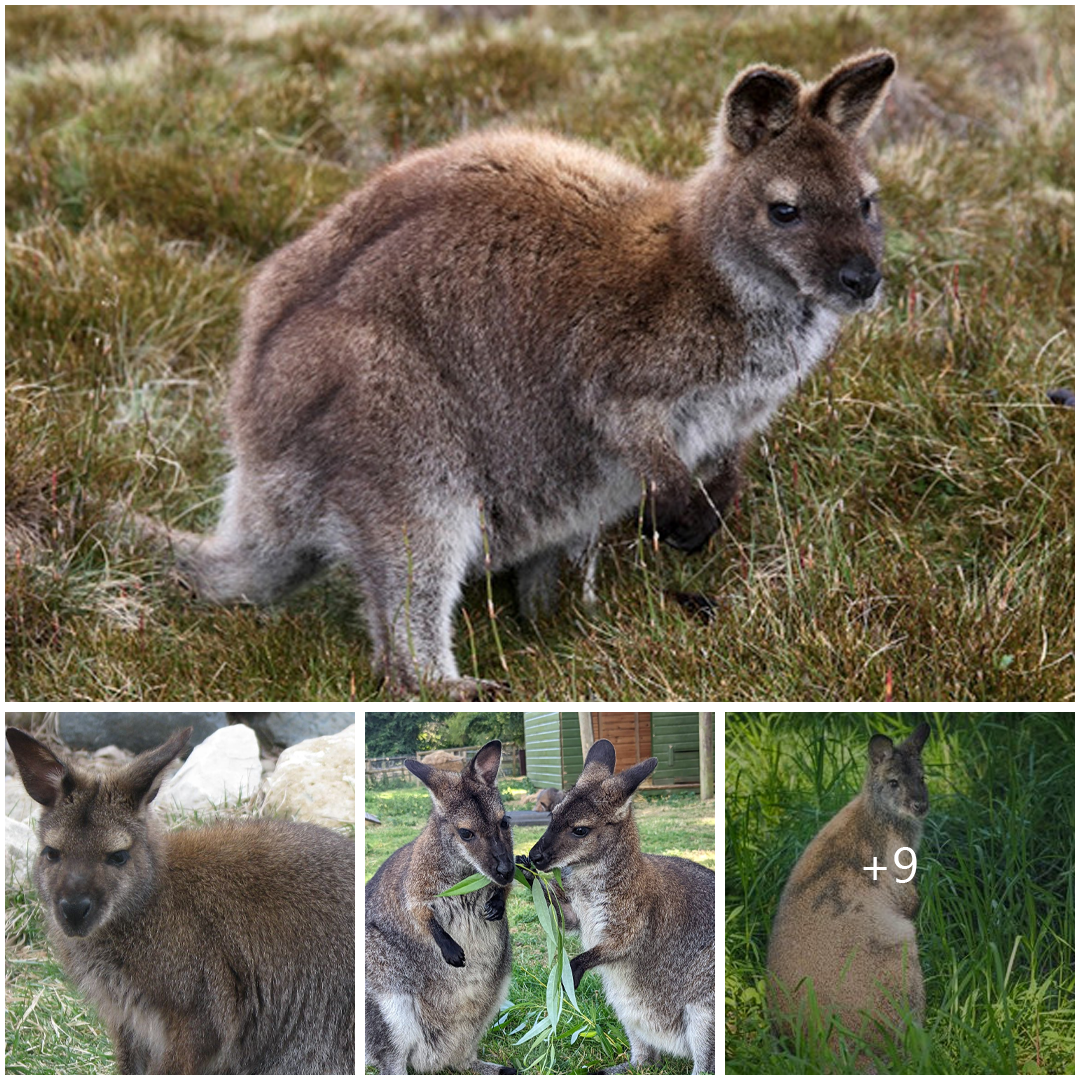
The Bennett’s wallaby has mostly tawny gray fur, with a white chest and belly, and a dark brown muzzle, paws and feet. This wallaby is also known as the red-necked wallaby, because of the red-tinted fur on the back of its neck and shoulders. Bennett’s is the name of the subspecies typically found in Tasmania.
These animals have an acute sense of smell and hearing. Their large ears are capable of moving 180 degrees independently, allowing them to remain alert for potential predators, such as dingoes.
As members of the genus Macropus, meaning “long foot,” Bennett’s wallabies are closely related to kangaroos and wallaroos. This genus includes some, but not all, other wallaby species. Shared adaptations within this genus include highly developed hind legs, a sturdy, tapered tail that aids in balance, a forward-opening pouch with four teats, underdeveloped vocal chords and eyes set high on the skull. In general, wallabies tend to be smaller than kangaroos and wallaroos and can be distinguished by their darker muzzle and paws.
One of the macropods most identifiable traits is their unique form of locomotion. Though best known for hopping, kangaroos, wallaroos and wallabies can also crawl and swim! Hopping is their most efficient means of travel when moving at speeds greater than 9 miles per hour (15 kilometers per hour). At the end of each bounce, when the legs are bent, energy stored in the tendons contributes to extending the leg and the next bounce. This transfer of energy is similar to a pogo stick.





